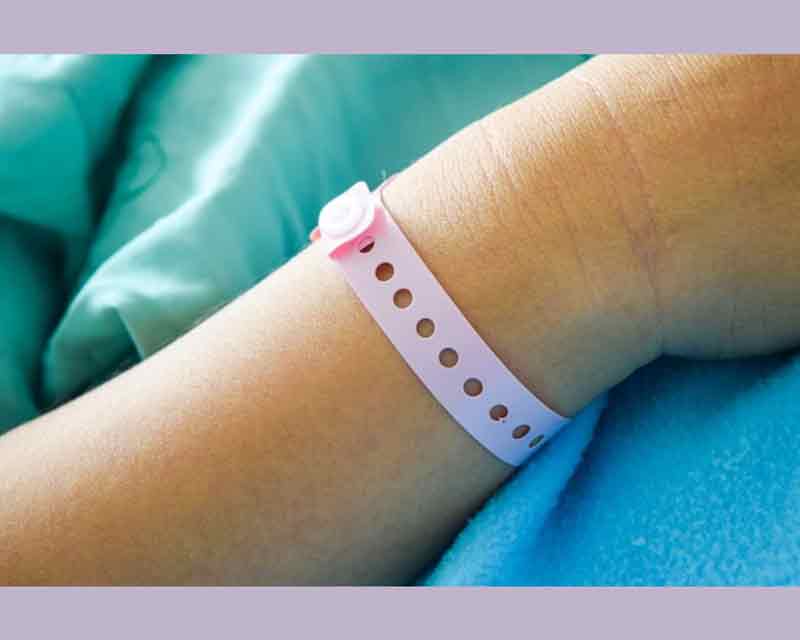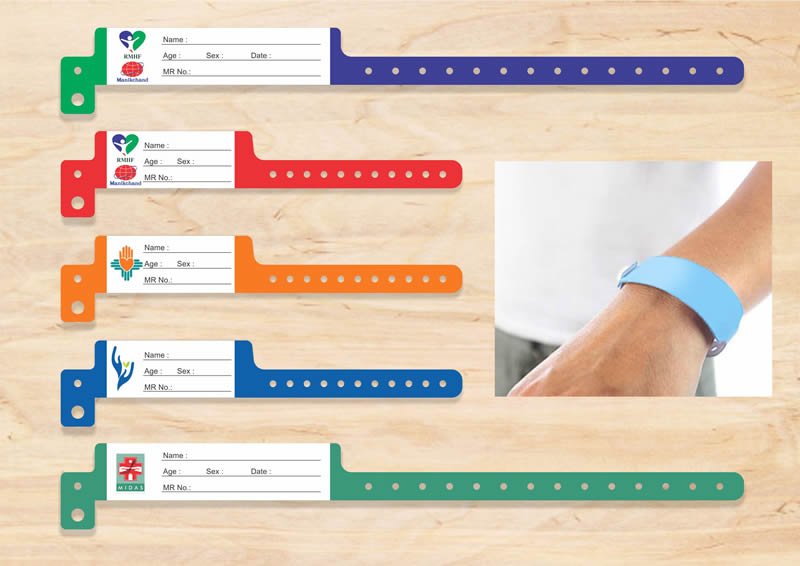Top Features to Look for in a Durable Patient Identification Band
Top Features to Look for in a Durable Patient Identification Band
Blog Article
Exploring the Different Kinds of Patient Identification Band Utilized in Clinical Facilities
In the detailed globe of healthcare, the crucial function of Patient Identification bands frequently goes undetected. These bands, varying from straightforward paper wristbands to innovative RFID bands, form the foundation of Patient security protocols, making sure accuracy in Patient Identification.
Recognizing the Significance of Patient Identification Bands
While they may seem like plain devices, Patient Identification bands play an essential duty in medical facilities. These bands serve as an essential tool for verifying Patient identity, protecting against clinical mistakes associated with misidentification. The bands normally display necessary details such as the Patient's name, age, blood group, and any kind of recognized allergies. They allow health care experts to rapidly access this essential information, consequently helping with prompt and accurate medical therapy. Patient Identification bands also aid in simplifying management tasks, ensuring precise record-keeping and payment. In spite of their simplicity, these bands symbolize the principle of Patient safety and security, a foundation of quality healthcare. Without them, the danger of medical errors, and as a result, Patient harm, may considerably raise.
Typical Paper Wristbands: Their Use and Limitations
Traditional paper wristbands have actually been a staple in Patient Identification across various medical facilities. While their use prevails, they nurture certain limitations that may impact their efficiency in Patient management. This section will concentrate on the extent of their application and the fundamental disadvantages related to their usage.
Paper Wristbands: Use Extent
In the realm of Patient Identification, paper wristbands have long held a crucial function. These bands are commonly made use of in outpatient settings, where the Patient's stay is short-term. The wristbands consist of necessary information such as the Patient's name, day of birth, and a distinct Identification number. This simple, yet effective system, allows doctor to swiftly and properly determine patients, making certain the appropriate therapy is administered. Paper wristbands are also made use of in emergency circumstances, where fast Identification is critical. Their usage includes occasions like blood donation drives and mass inoculation programs, even more highlighting their versatility. Regardless of improvements in modern technology, the modest paper wristband remains a economical and dependable remedy for Patient Identification in various healthcare situations.
Limitations of Paper Wristbands
In spite of their extensive usage, paper wristbands are not without their disadvantages. In enhancement, paper wristbands frequently lack the technical capabilities of even more contemporary choices, such as barcoding or RFID chips, restricting their performance to merely displaying written details. Paper wristbands can trigger pain or skin inflammation to some patients, particularly when worn for prolonged periods.
Barcoded Wristbands: Developments in Patient Identification
While Patient Identification has actually long been a vital aspect of health care, the development of barcoded wristbands indicates a significant leap forward. These bands leverage the simpleness of barcoding modern technology, allowing for Patient information to be rapidly scanned and accessed. They enhance the rate and precision of Patient Identification, decreasing the danger of clinical errors connected to misidentification.
Radio Regularity Identification (RFID) Bands: a Step Towards Futuristic Healthcare
The advancement of Patient Identification bands has brought my blog about the emergence of Superhigh frequency Identification (RFID) Bands (patient identification band). These cutting-edge tools present key advantages for health care centers, using a more efficient and technically advanced methods of Patient Identification. The implementation of RFID in medical care is a considerable action towards a more futuristic strategy to Patient management and safety
Recognizing RFID Bands

RFID Bands: Secret Advantages
Mainly, these bands boost Patient safety and security by offering precise, rapid Identification, thus lowering clinical mistakes. RFID bands can keep a vast quantity of Patient information, including medical background and allergic reactions, allowing personalized treatment. On the whole, RFID his explanation bands stand for a considerable innovation in Patient Identification innovation, profiting both individuals and health care providers.
Carrying Out RFID in Health Care
As we enter a highly advanced age, the application of RFID bands in medical care becomes increasingly important. These bands give a smooth way to track and recognize clients, guaranteeing their safety and enhancing performance in therapy procedures. RFID bands supply numerous advantages over traditional Identification approaches. They can store a large amount of information, consisting of the Patient's medical history and therapy strategies, which can be conveniently accessed by doctor. This information helps physicians make educated choices pertaining to the Patient's treatment plan. Additionally, RFID bands decrease clinical errors by offering precise Patient Identification, which is important in stopping misdiagnosis or wrong medication management. Hence, the implementation of RFID bands is a significant step towards boosting Patient safety and healthcare distribution.

Color-Coded Wristbands: Assisting in Quick and Accurate Medical Diagnosis
In the dynamic atmosphere of a clinical center, color-coded wristbands have emerged as essential devices for swift and specific Identification of a person's medical problem. These wristbands, put on by patients, carry certain colors that correspond to various medical conditions or conditions. Red can suggest allergy threats, while yellow may represent a fall risk. This system is created to use instant visual signs to doctor, enhancing Patient safety and security and care high quality. In emergency scenarios, the usage of these wristbands enables fast decision-making. However, the performance of color-coded wristbands depends upon the uniformity of color analysis across health care organizations, requiring usual standards for regular application.
Strategies for Efficient Application and Monitoring of Patient ID Bands
Achieving ideal use Patient Identification bands necessitates a well-structured approach for their execution and management. The very first step includes training all health workers on the value of correctly applying and checking out these bands. Medical facilities should systematize why not try here the use of ID bands throughout all divisions, guaranteeing uniformity and lowering discrepancies. Routine audits should be conducted to confirm adherence to policies and to correct any disparities. Patient education is additionally vital; clients must understand the purpose of the bands and the need for their consistent wear. patient identification band. It's vital to have a back-up strategy in location, such as barcode scanning or biometrics, to make sure that Patient Identification is never ever endangered.
Final thought
Patient Identification bands are crucial in medical facilities to guarantee safety and security and precision. Typical paper, barcoded, RFID, and color-coded wristbands each hold special benefits, ranging from cost-effectiveness to innovative data storage and immediate clinical alerts. Efficient execution and administration of these bands can considerably lower clinical errors, increase performance, and improve overall Patient care. Thus, understanding and using these Identification devices is paramount for preserving high criteria in medical care.
These bands, varying from basic paper wristbands to sophisticated RFID bands, develop the backbone of Patient security procedures, making certain precision in Patient Identification.The development of Patient Identification bands has actually brought about the development of Radio Regularity Identification (RFID) Bands. Overall, RFID bands stand for a considerable improvement in Patient Identification modern technology, profiting both individuals and health care suppliers.
RFID bands decrease clinical errors by giving precise Patient Identification, which is critical in protecting against misdiagnosis or wrong medication management. Patient education is additionally important; people need to understand the objective of the bands and the need for their continuous wear.
Report this page